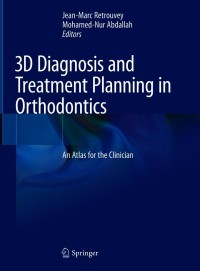Buy 3D Diagnosis and Treatment Planning in Orthodontics: An Atlas for the Clinician PDF ebook by author Springer – published by Springer in 2021 and save up to 80% compared to the print version of this textbook. With PDF version of this textbook, not only save you money, you can also highlight, add text, underline add post-it notes, bookmarks to pages, instantly search for the major terms or chapter titles, etc.
You can search our site for other versions of the 3D Diagnosis and Treatment Planning in Orthodontics: An Atlas for the Clinician PDF ebook. You can also search for others PDF ebooks from publisher Springer, as well as from your favorite authors. We have thousands of online textbooks and course materials (mostly in PDF) that you can download immediately after purchase.
Note: e-textBooks do not come with access codes, CDs/DVDs, workbooks, and other supplemental items.
eBook Details:
Full title: 3D Diagnosis and Treatment Planning in Orthodontics: An Atlas for the Clinician
Edition:
Copyright year: 2021
Publisher: Springer
Author: Springer
ISBN: 9783030572235, 9780128203330
Format: PDF
Description of 3D Diagnosis and Treatment Planning in Orthodontics: An Atlas for the Clinician:
This richly illustrated book is a wide-ranging guide to modern diagnostics and treatment planning in orthodontics, which are mandatory prior to the initiation of any type of comprehensive treatment. The importance of three-dimensional (3D) imaging techniques has been increasingly recognized owing to the shortcomings of conventional two-dimensional imaging in some patients, such as those requiring complex adult treatment and those with temporomandibular joint dysfunctions or sleep disturbances. In the first part of this book, readers will find clear description and illustration of the diagnostic role of the latest 3D imaging techniques, including cone beam computed tomography, intra-oral scanning, and magnetic resonance imaging. The second part explains in detail the application of 3D techniques in treatment planning for orthodontic and orthognathic surgery. Guidance is also provided on the use of image fusion software for the purposes of accurate diagnosis and precise design of the most appropriate biomechanical approach in patients with malocclusions.





